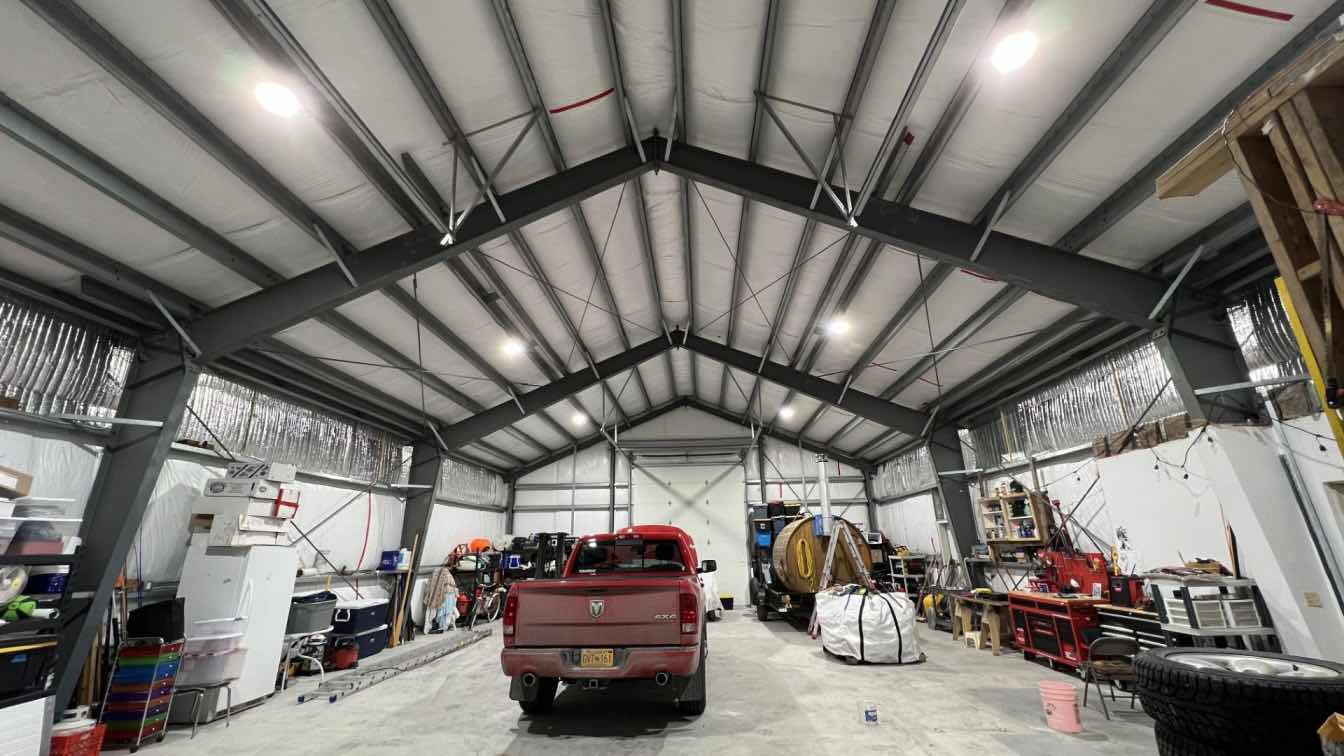Essential Landscaping Prep: Your Project Checklist
Starting a landscaping project can be an exciting endeavor, but it's crucial to approach it with careful planning and preparation. A well-planned checklist can save you time, money, and ensure a successful outcome.
This guide will walk you through the essential steps to take before diving into your landscaping project, covering key areas such as planning, pre-project preparations, execution strategies, and post-project considerations.
Finding A Professional
Planning Your Landscaping Project
Before you start digging or planting, it's essential to have a clear plan in place. This involves assessing your space, setting a budget, establishing a timeframe, and creating a design concept that aligns with your goals and preferences.
Assessing Your Space And Needs
Evaluating Current Landscape
Take a close look at your current setting and identify areas that need improvement or require a complete overhaul. Consider factors such as sun exposure, soil quality, existing plants, and drainage issues.
Identifying Goals And Priorities
Determine what you want to achieve with your landscaping project. Are you looking to create a relaxing outdoor oasis, enhance curb appeal, or establish a low-maintenance garden? Prioritize your goals based on your lifestyle and preferences.
Setting A Realistic Budget
Establish a realistic budget for your landscaping project, taking into account materials, labor costs, and any additional expenses. Be sure to allocate funds for unexpected contingencies that may arise during the process.
Establishing A Timeframe
Determine a realistic timeframe for your project, considering factors such as the scope of work, weather conditions, and the availability of contractors or materials. Break down the project into manageable phases if necessary.
Deciding Between Contractors And Companies
Consider whether you want to tackle the project yourself or hire professionals. If you opt for the latter, research reputable landscaping contractors in Sacramento or companies in your area. Look for experienced professionals who can bring your vision to life while staying within your budget.
Creating A Design Concept
Considering Aesthetics And Functionality
Develop a design concept that balances aesthetics and functionality. Consider the overall style you want to achieve, whether it's a formal garden, a natural setting, or a modern outdoor living area.
Incorporating Existing Features
Look for ways to incorporate existing features, such as established trees or natural rock formations, into your new outdoor design. This can help create a unified and coordinated look while saving on costs.
Essential Pre-Project Preparations
Before breaking ground on your landscaping project, there are several essential preparations to consider, including soil analysis, drainage issues, local regulations, and selecting suitable plants.
Soil Analysis And Preparation
Testing Soil Quality
Have your soil tested to determine its pH level, nutrient content, and texture. This information will help you choose plants that are well-suited to your soil type and make necessary amendments.
Improving Soil Fertility
Based on the soil test results, take steps to improve soil fertility by adding organic matter, such as compost or well-rotted manure. This will help create a healthy foundation for your plants to thrive.
Addressing Drainage Issues
Identify any drainage concerns in your outdoor area and take corrective measures before planting. This may involve grading the soil, installing drainage systems, or creating rain gardens to manage excess water.
Researching Local Regulations And Permits
Familiarize yourself with local regulations and permits required for landscaping projects. This may include restrictions on tree removal, fence heights, or water usage. Obtain necessary permits before starting your project to avoid potential fines or legal issues.
Selecting Suitable Plants
Climate-Appropriate Choices
Choose plants that are well-suited to your local climate and can thrive in the specific conditions of your outdoor area, such as sun exposure, soil type, and water availability. Consider native plants that are adapted to your region's conditions.
Considering Maintenance Requirements
Select plants that align with your desired level of maintenance. If you prefer a low-maintenance outdoor space, consider drought-resistant plants or those that need minimal care and attention.
Gathering Necessary Tools And Materials
Make a list of the tools and materials you'll need for your landscaping project, such as shovels, rakes, pruning shears, mulch, and plants. Ensure you have everything on hand before starting to avoid delays.
Execution And Implementation Strategies
With your planning and preparations complete, it's time to execute your landscaping project. Develop a step-by-step action plan, prioritize tasks, and implement safety measures to ensure a smooth and successful process.
Developing A Step-By-Step Action Plan
Break down your landscaping project into manageable steps and create a detailed action plan. This may include tasks such as site preparation, planting, hardscaping, and irrigation installation.
Prioritizing Tasks
Prioritize tasks based on their importance and dependencies. For example, site preparation and soil amendment should be completed before planting, while irrigation installation can be done after plants are in place.
Coordinating With Professionals (If Applicable)
If you've hired professionals for your project, coordinate with them to ensure everyone is on the same page regarding the design, timeline, and expectations. Maintain open communication throughout the process to address any issues or changes that may arise.
Implementing Safety Measures
Prioritize safety during the execution of your landscaping project. Wear appropriate protective gear, such as gloves and safety glasses, when handling tools and materials. Follow proper lifting techniques and take breaks as needed to avoid injury.
Post-Project Considerations
Once your landscaping project is complete, it's important to establish a maintenance schedule and monitor the health and growth of your plants. Fine-tune your design as needed and plan for future enhancements.
Establishing A Maintenance Schedule
Create a maintenance schedule that includes tasks such as watering, pruning, fertilizing, and pest control. Stick to this schedule to keep your outdoor space looking its best and ensure the long-term health of your plants.
Monitoring Plant Health And Growth
Regularly monitor your plants for signs of stress, disease, or pest infestations. Address any issues promptly to prevent them from spreading and causing further damage.
Fine-Tuning The Landscape Design
As your outdoor space matures, you may need to make adjustments to your design. This could involve relocating plants that aren't thriving in their current location or adding new elements to enhance the overall look and functionality of your outdoor space.
Planning For Future Enhancements
Consider future enhancements you may want to make to your outdoor space, such as adding exterior lighting, installing a water element, or creating a vegetable garden. Plan for these additions in advance to ensure they integrate seamlessly with your existing environment.
Frequently Asked Questions
How much does a typical landscaping project cost?
The cost of a landscaping project varies widely depending on factors such as the size of your space, the complexity of the design, and the materials used. On average, homeowners can expect to spend between $5,000 and $20,000 for a complete landscaping overhaul.
What are the most important factors to consider when selecting plants for your outdoor space?
When selecting plants for your outdoor space, consider factors such as your local climate, sun exposure, soil type, and water availability. Choose plants that are well-suited to these conditions and align with your desired level of maintenance.
How long does a landscaping project usually take from start to finish?
The duration of a landscaping project depends on the scope of work and the size of your space. A small project, such as creating a new garden area, may take a few days, while a complete outdoor transformation can take several weeks or even months.
What are some common mistakes to avoid when planning a landscaping project?
Common mistakes to avoid include failing to create a detailed plan, underestimating costs, choosing plants that are not well-suited to your climate or soil type, and neglecting to address drainage issues before planting.
How can I ensure proper drainage in my landscaped area?
To ensure proper drainage, grade your soil to direct water away from your home's foundation and any low-lying areas.
Install drainage systems, such as French drains or catch basins, in areas prone to standing water. Consider creating rain gardens or bioswales to manage excess water and prevent erosion.
Conclusion
A successful landscaping project requires careful planning, preparation, and execution. By following this essential checklist, you can ensure that your project stays on track and achieves the desired results.
Remember to assess your space and needs, set a realistic budget and timeline, select suitable plants, and address any pre-project issues such as soil quality and drainage.
As you execute your project, prioritize safety and maintain open communication with any professionals you've hired. Once your outdoor area is complete, establish a maintenance schedule and monitor the health and growth of your plants.
By taking these steps, you'll be well on your way to creating a beautiful, functional, and thriving outdoor space that you can enjoy for years to come.





